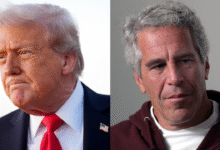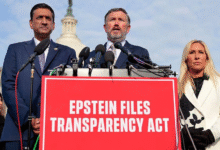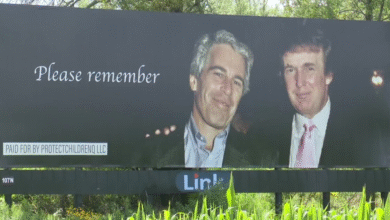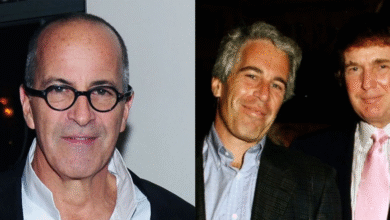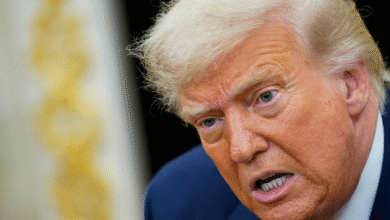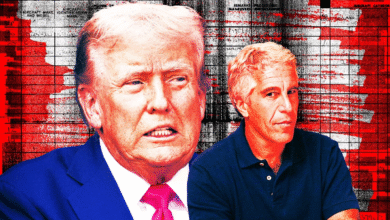Disappointing employment numbers, tariffs uncertainty dog Trump with Democrats seeking foothold
Just 37% of voters approve of Trump's economy, Gallup polls says
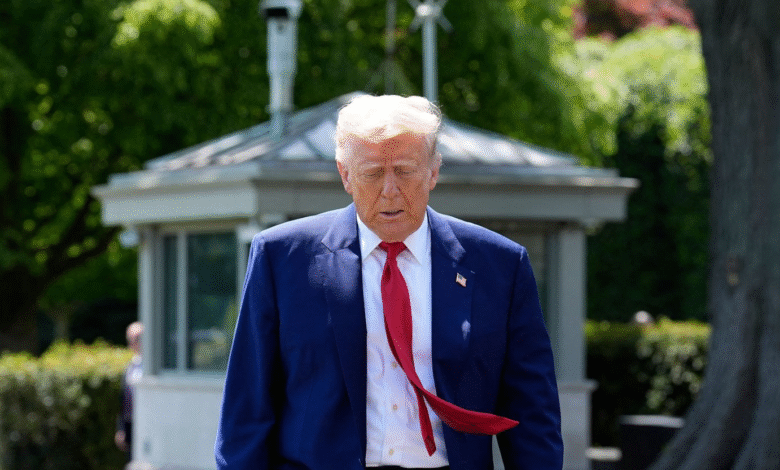
The weak economic indicators are worrying President Trump’s supporters and fueling growing optimism among Democrats about a political comeback.
Friday’s employment figures were disappointing. Unemployment rose, and employers added only 73,000 jobs in July. Job gains in May and June were revised downward, with a total of 258,000 jobs.
On the bright side, however, gross domestic product grew a surprisingly strong 3% in the second quarter, beating analysts’ expectations for a 2.4% increase.
On Sunday, during two political broadcasts, White House economic adviser Kevin Hassett said the monthly employment figures were “unreliable” and “not keeping pace with the economy,” while praising GDP growth.
“The outlook is bright, and we see a bright future,” the director of the National Economic Council said on Fox News Sunday.
Former Treasury Secretary Larry Summers, who served as Hassett’s chief of staff during the Obama administration, said the downward revision to job creation earlier this summer “means there’s a real possibility we’re in an economic downturn.”
On two political talk shows airing Sunday, White House economic adviser Kevin Hassett said monthly employment figures were “unreliable” and “not keeping pace with the economy,” while praising GDP growth.
“All eyes are on the economy with great confidence,” the director of the National Economic Council said on Fox News Sunday.
Former Treasury Secretary Larry Summers, who served as Hassett’s chief of staff during the Obama administration, said the downward revision to job creation figures earlier this summer “means there’s a real possibility we’re in a downturn.”
On Thursday, Trump delayed the effective date of his punitive import tariffs from August 1 to 7.
Trump also imposed new tariffs ranging from 15% to 41% on 66 countries and the European Union, their highest levels in more than a century. He announced new tariffs of 35% on imports from Canada, 50% on those from Brazil, and 39% on those from Switzerland.
The 90-day suspension of tariffs on many Chinese products will expire on August 12. The president could extend this period, as trade negotiations with China, the largest source of US goods imports, have been “very positive,” according to U.S. Trade Representative Jamison Greer, on CBS’s “Face the Nation” Sunday.
His decision to fire the director of the Bureau of Labor Statistics after the poor employment results overshadowed Mr. Trump’s trade announcements.
The president accused Biden appointee Erica McIntarver of falsifying July data to discredit him and congressional Republicans and of manipulating the figures before the November election to favor Vice President Kamala Harris. Mr. Summers called the dismissal “a Democratic scheme that leads to tyranny.”
Senator Alex Padilla, a California Democrat, accused Mr. Trump of “trying to manipulate the Bureau of Labor Statistics” because of his “lack of confidence in the economy.”
“I think an investigation is absolutely necessary,” he said on NBC’s “Meet the Press.”
Mr. Hassett called Ms. McIntarver a “terrific person” but defended Mr. Trump’s decision to fire her, saying he needed a “new vision for the Bureau of Labor Statistics.”
That could include changing the formulas for calculating jobs. He said he has been warning since 2015 that these formulas don’t keep up with the fast pace of the modern economy.
“When data is unreliable and constantly revised, some will wonder if there’s partisan logic,” Mr. Hassett said.
Elsewhere, Adriana Kugler announced her resignation as Federal Reserve governor, leaving Mr. Trump to fill the vacancy while pressuring the central bank to lower interest rates.
The Federal Reserve voted Wednesday to keep short-term interest rates between 4.25% and 4.5%, but the decision included the first dissent from two board members in more than 30 years.
Both opponents are Trump appointees. Ms. Kugler, a Biden appointee, voted with Fed Chairman Jerome Powell and other board members to keep interest rates stable before announcing her resignation.
Mr. Trump wrote on Truth Social: “She knew he was making mistakes on interest rates. He should resign too!”
Mr. Hassett said the president has “begun an active search” to appoint the next Fed chair after Jerome Powell’s term ends.
“They will review the list of names,” Treasury Secretary Scott Bessent said on NBC’s “Meet the Press.”
The president’s choice to fill Ms. Kugler’s seat on the board could be his choice to chair the board.
Mr. Powell’s term ends in May, but his term on the board does not end until January 31, 2028.
The chairman told reporters he was “very excited” about filling a seat on the board and had about three candidates in mind.
“I have a lot of good candidates,” he said.
Mr. Trump wants the Federal Reserve to help stimulate economic growth by lowering interest rates, thereby reducing the cost of car loans, mortgages, and credit cards for Americans.
Economists expect the Fed to cut interest rates at its September meeting, given the slowing job market.
Recent polls show voters are dissatisfied with Mr. Trump’s handling of the economy, and Democrats hope to turn that frustration into major victories in next year’s midterm elections.
Only 37% of voters approve of Mr. Trump’s handling of the economy, according to a Gallup poll released last week. This figure is down from 42% in February and consistent with other polls, including those by the Wall Street Journal and CBS News.
Most worrying for the White House, the sharpest decline in support comes from independents. Only 29% of them believe the president is doing a good job on the economy.
Democrats have struggled to find their footing since Mr. Trump recaptured the White House and Republicans won the House and Senate.
The left has finally realized it can send a message to the American people and has begun relentlessly attacking Mr. Trump on the economy.
Senate Minority Leader Charles E. Schumer, a New York Democrat, linked the weak jobs reports to Mr. Trump’s “chaotic tariffs.”
Beyond their intrinsic merits, these tariffs are characterized by varying timing and amounts.
“This is what the consequences of tariffs look like,” Schumer said on the Senate floor Friday. “Businesses are hesitating not knowing what Donald Trump will do next, and now we have clear evidence that this is holding back jobs and growth.”
Senator Ron Wyden of Oregon, the top Democrat on the Finance Committee, issued a stark warning.
He said: “Trump and the Republicans need to radically change course before they plunge us into recession, because we certainly cannot afford to endure this chaos and uncertainty for another three and a half years.”
Republican strategist Jamie Keady said Republicans can counter the Democrats’ narrative.
He added that Republicans must prove that Trump’s tax cuts will stimulate the economy after record inflation and sharply rising gas prices under President Biden.
He said: “Democrats have their tricks, but voters remember the days when gas was $20 and know President Trump is the one who can bring it back.”
The White House acknowledged that the jobs report was disappointing, but insisted that once fully implemented, Mr. Trump’s tariffs, along with a package of tax cuts and spending known as the “Big, Beautiful Bill,” would revive the economy.
Stephen Meyer, chairman of the White House Council of Economic Advisers, said the bill helped secure trade deals covering 60% of the global economy because it “contains very strong incentives to invest in America.”
He added: “These two measures will provide a powerful stimulus to the economy and create an economic boom.”
Ryan Young, chief economist at the Competitive Enterprise Institute, said the economy is solid, but he sees many warning signs.
He said that while tariffs aren’t truly inflationary, they actually raise prices, and businesses are devoting their resources to finding workarounds rather than producing better products at affordable prices.
“If the economy was doing well before the tariffs were imposed, there’s still room to run before it collapses completely,” Young said. “But slowing job growth, weak growth, and the risk of rising inflation pose a triple threat that could be difficult to overcome.”
Overall, the economy is sending mixed signals. Both consumer and business spending increased in the second quarter. Consumer spending grew at an annual rate of 1.4% from April to June, compared to 0.5% in the first quarter. However, this pace is expected to slow as retail prices are affected by Trump’s tariffs.
Moreover, business spending rose 1.9% in the second quarter. Purchases of computers, delivery trucks, factory machinery, and other business equipment grew at a robust daily rate of 4.8%, while spending on buildings, oil rigs, and other facilities fell 10.3%.
Although GDP was better than expected, growth in economic output was temporarily boosted by the sharp decline in imports before the imposition of Trump’s tariffs. Businesses did not order large quantities of goods from abroad, as imports fell 30.3%, reversing the 37.9% increase in imports in the first quarter.


